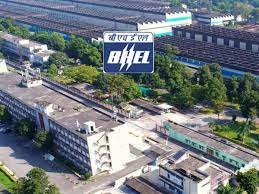BHEL Achieves Milestone in Curbing NOx Emissions with Indigenous SCR Catalysts
In recent groundbreaking news, Bharat Heavy Electricals Limited (BHEL) has achieved a significant milestone in its mission to reduce NOx (nitrogen oxide) emissions. The company has successfully developed indigenous Selective Catalytic Reduction (SCR) catalysts, a technology that holds immense importance, especially for students preparing for various government exams like teaching positions, police officers, banking, railways, and civil services. In this article, we will delve into why this news is crucial, provide historical context, and present five key takeaways that students should keep in mind for their exams.
Why this News is Important:
- Environmental Impact: BHEL’s achievement directly addresses the critical issue of NOx emissions. This news underscores the importance of sustainable practices and environmental consciousness, topics that are often part of government exam syllabi.
- Indigenous Innovation: The development of indigenous SCR catalysts is a significant step towards self-reliance and the ‘Make in India’ initiative. It showcases India’s technological prowess, which is a relevant topic for exams assessing national development policies.
- Government Policies and Regulations: Understanding SCR technology is crucial for aspirants of various government positions as it aligns with policies and regulations related to emission control and sustainable development.
Historical Context:
To appreciate the significance of BHEL’s achievement, it’s essential to understand the historical context. NOx emissions have been a long-standing concern due to their adverse effects on air quality and health. Governments worldwide have been implementing stringent emission norms, necessitating the development of advanced technologies like SCR catalysts. BHEL’s endeavor aligns with India’s commitment to reducing air pollution and meeting international emission standards, making it a noteworthy milestone in the country’s industrial history.
Key Takeaways from BHEL’s Achievement:
| Serial Number | Key Takeaway |
|---|---|
| 1. | Indigenous SCR catalysts developed by BHEL |
| 2. | Significant step towards reducing NOx emissions |
| 3. | Promotes ‘Make in India’ and self-reliance |
| 4. | Relevant for government policies and regulations |
| 5. | Demonstrates India’s industrial and technological prowess |
Important FAQs for Students from this News
Q: What is NOx emissions, and why are they a concern?
A: NOx emissions refer to nitrogen oxide emissions, which are harmful pollutants that contribute to air pollution and its associated health and environmental problems. They are a concern because they can lead to smog, acid rain, and respiratory issues in humans.
Q: How does Selective Catalytic Reduction (SCR) technology work?
A: SCR technology works by using a catalyst to convert NOx emissions into harmless nitrogen and water vapor. It does this by adding a reducing agent (usually ammonia or urea) to the exhaust gases, which reacts with NOx to form nitrogen and water.
Q: Why is BHEL’s development of indigenous SCR catalysts significant?
A: BHEL’s development of indigenous SCR catalysts is significant because it reduces India’s reliance on imported technology, aligns with the ‘Make in India’ initiative, and helps combat air pollution by curbing NOx emissions.
Q: How does this news relate to government exams?
A: This news is relevant to government exams because it covers topics such as environmental regulations, indigenous innovation, and government policies, which are often part of the syllabus for various government positions.
Q: What are the key takeaways from BHEL’s achievement?
A: The key takeaways from BHEL’s achievement include the development of indigenous SCR catalysts, its role in reducing NOx emissions, support for ‘Make in India,’ its relevance to government policies, and a showcase of India’s industrial and technological capabilities.

